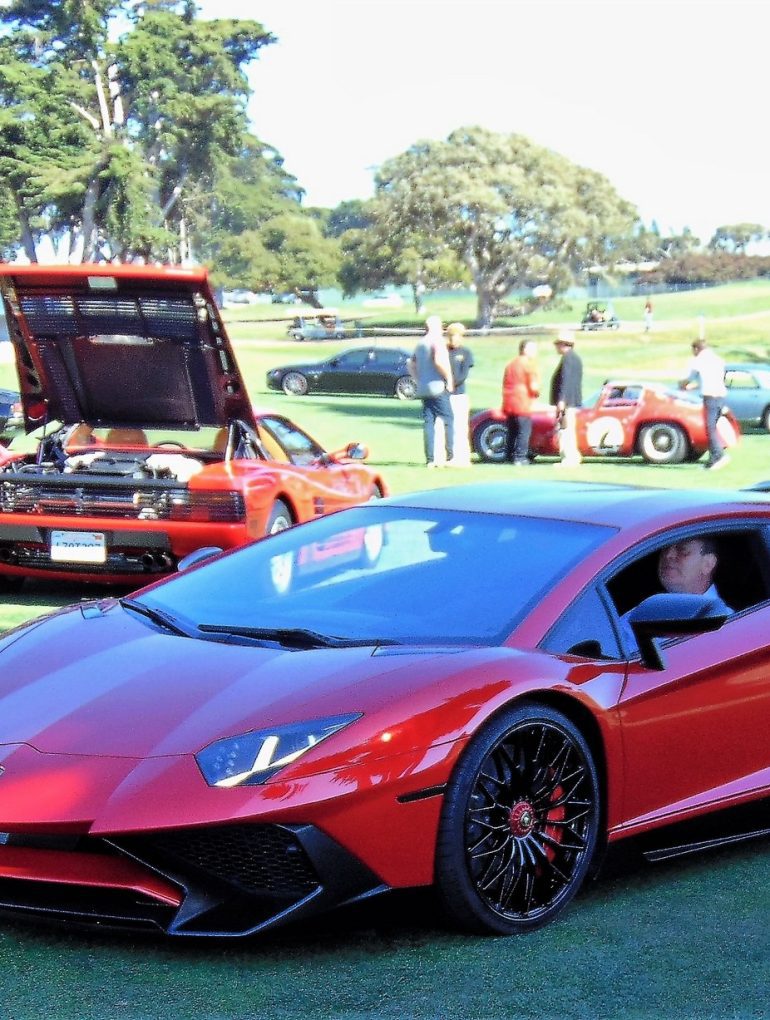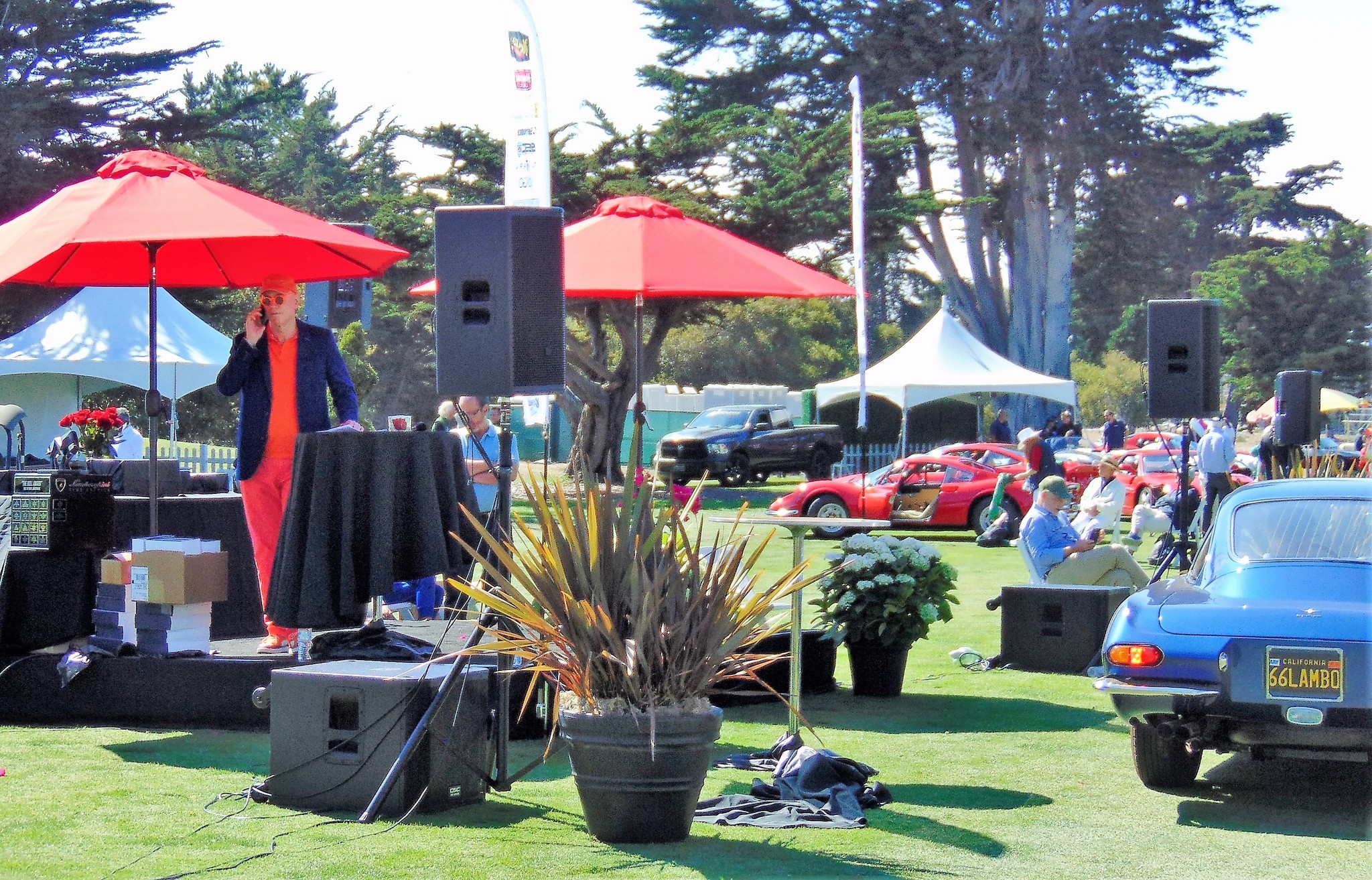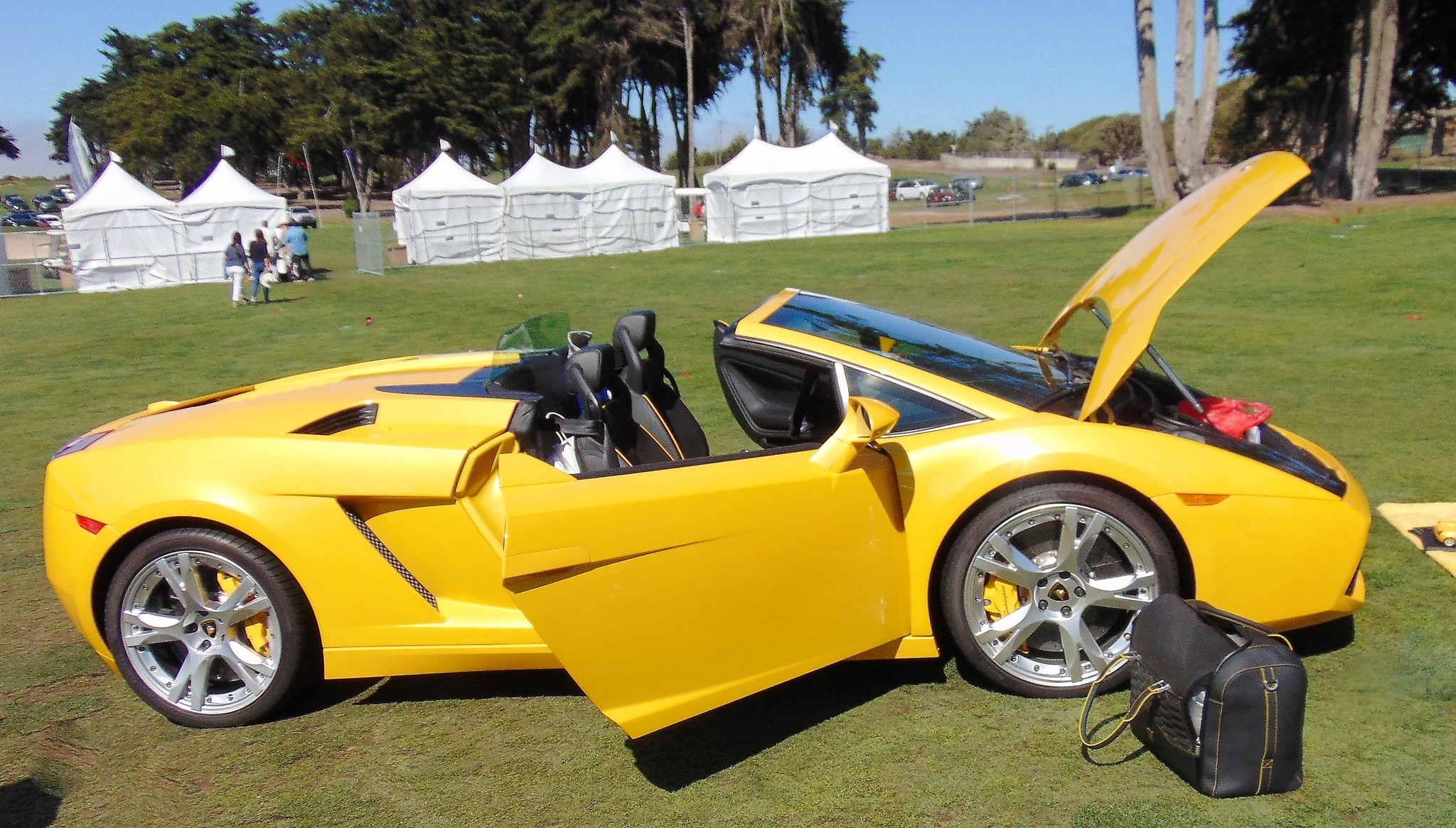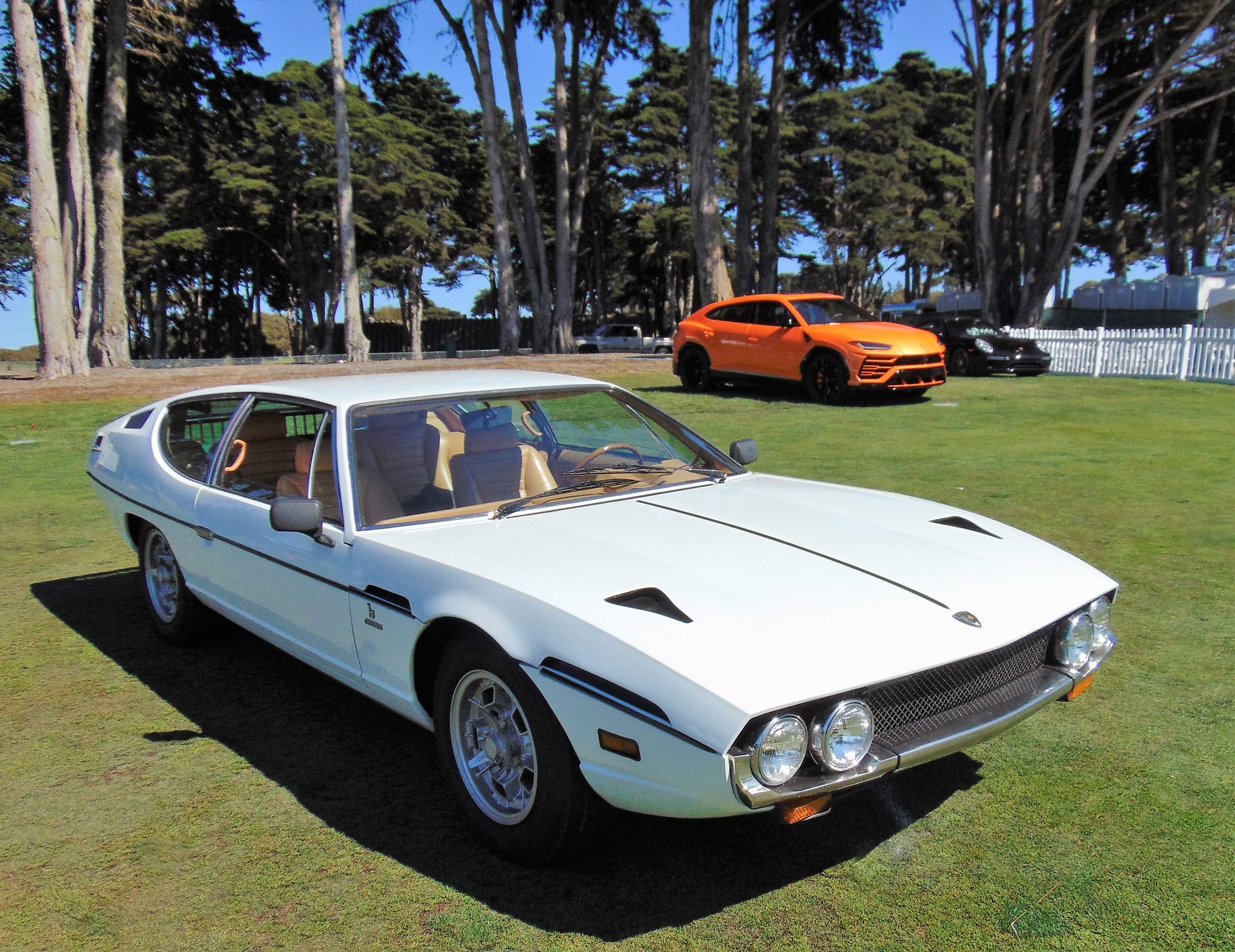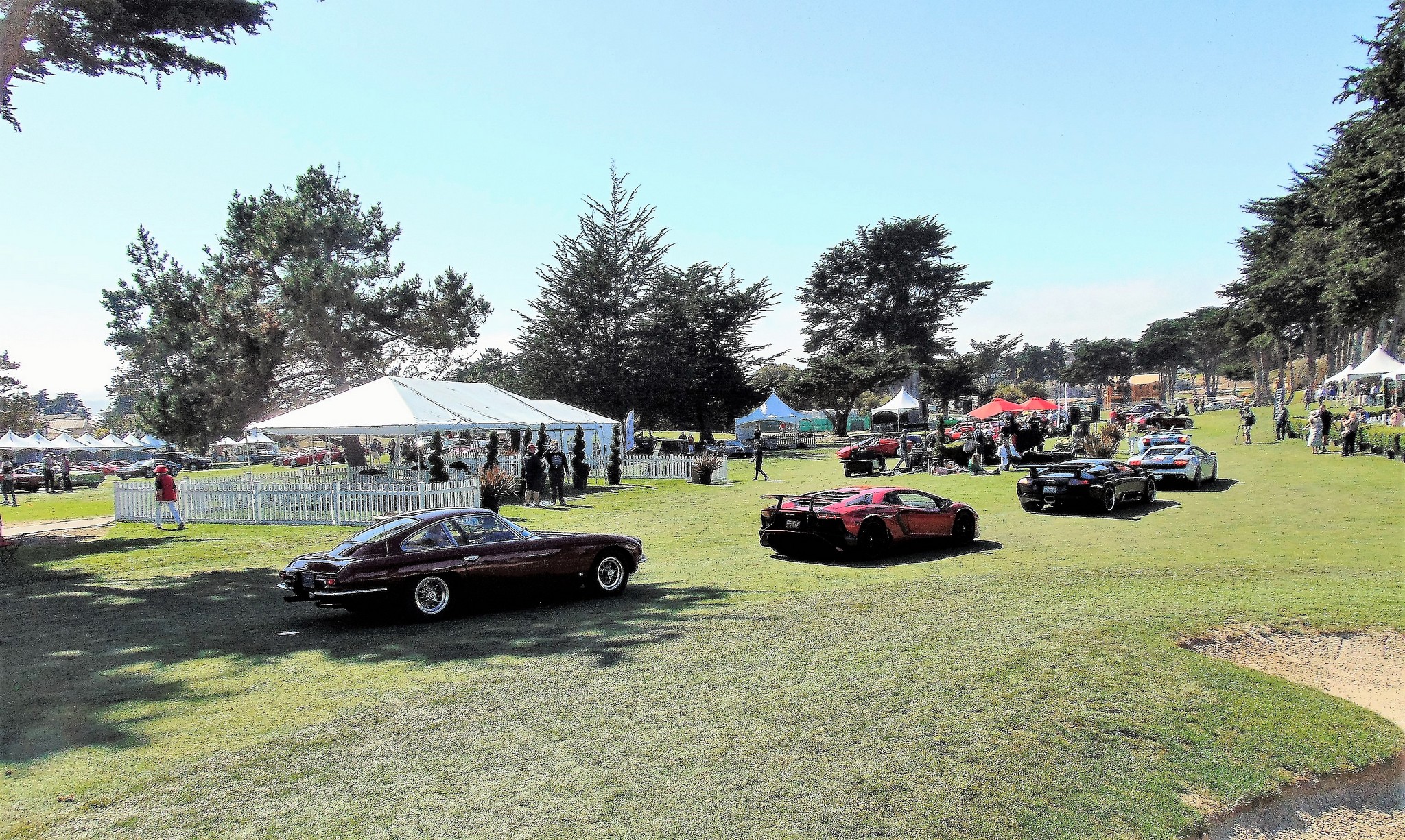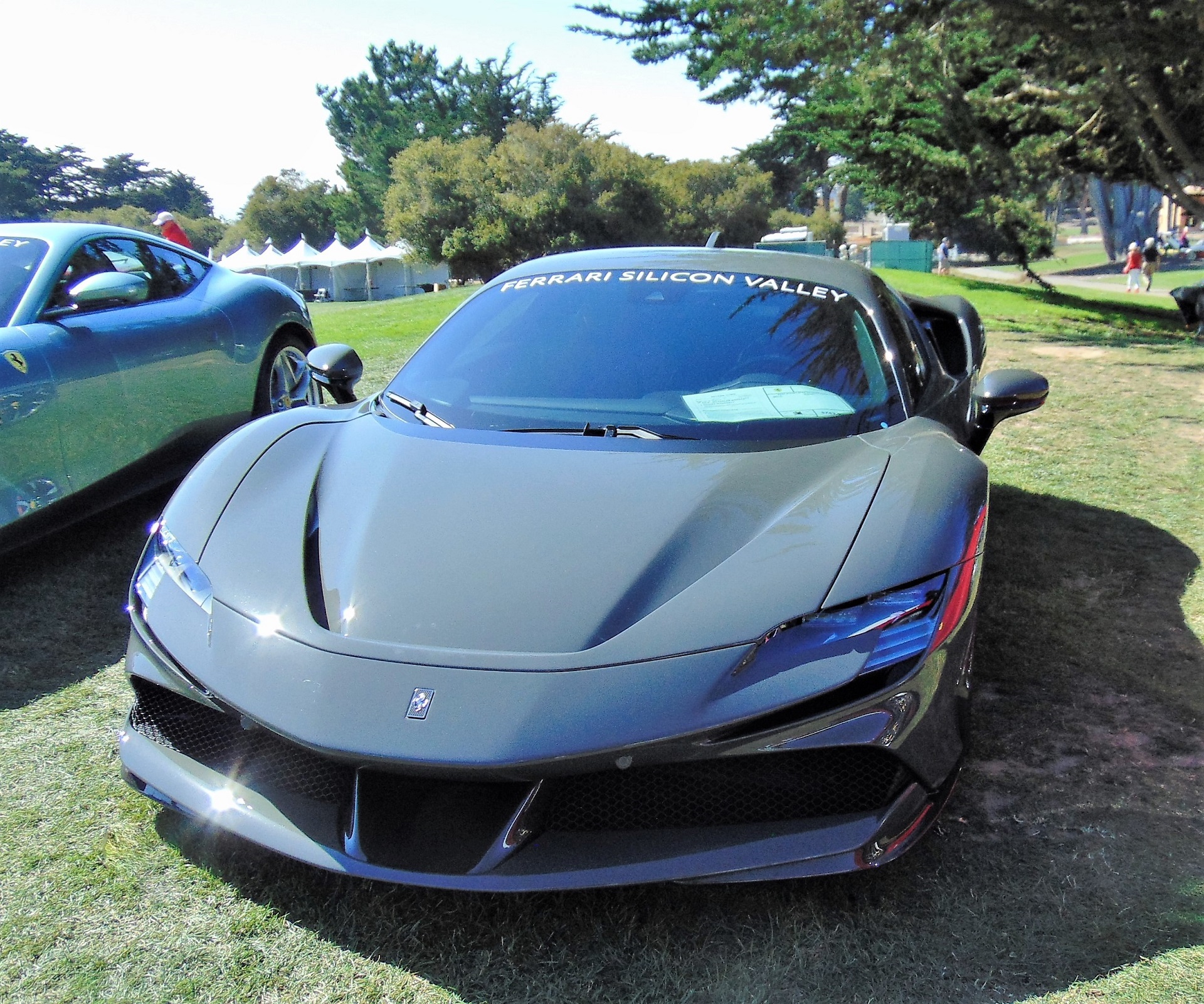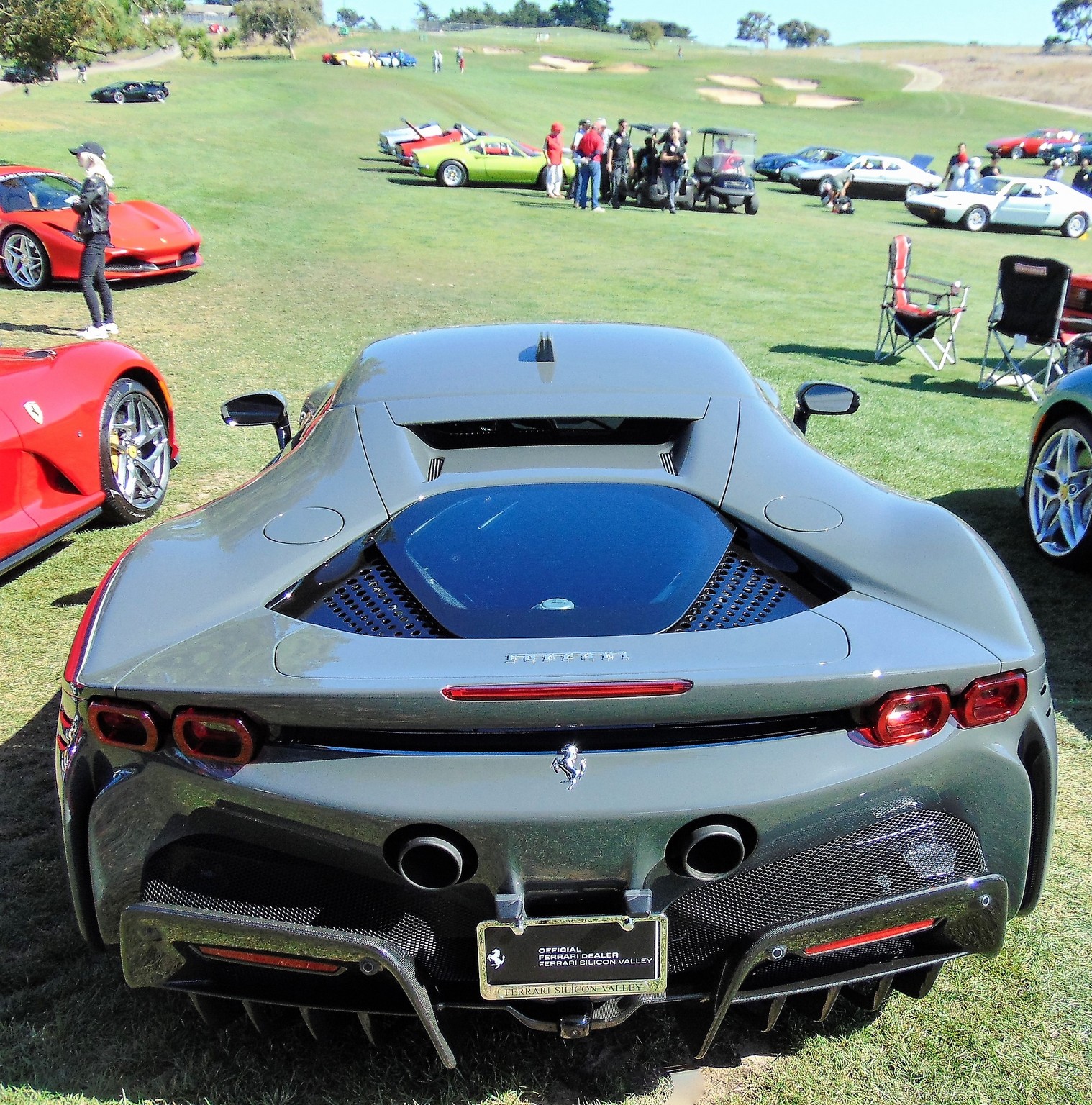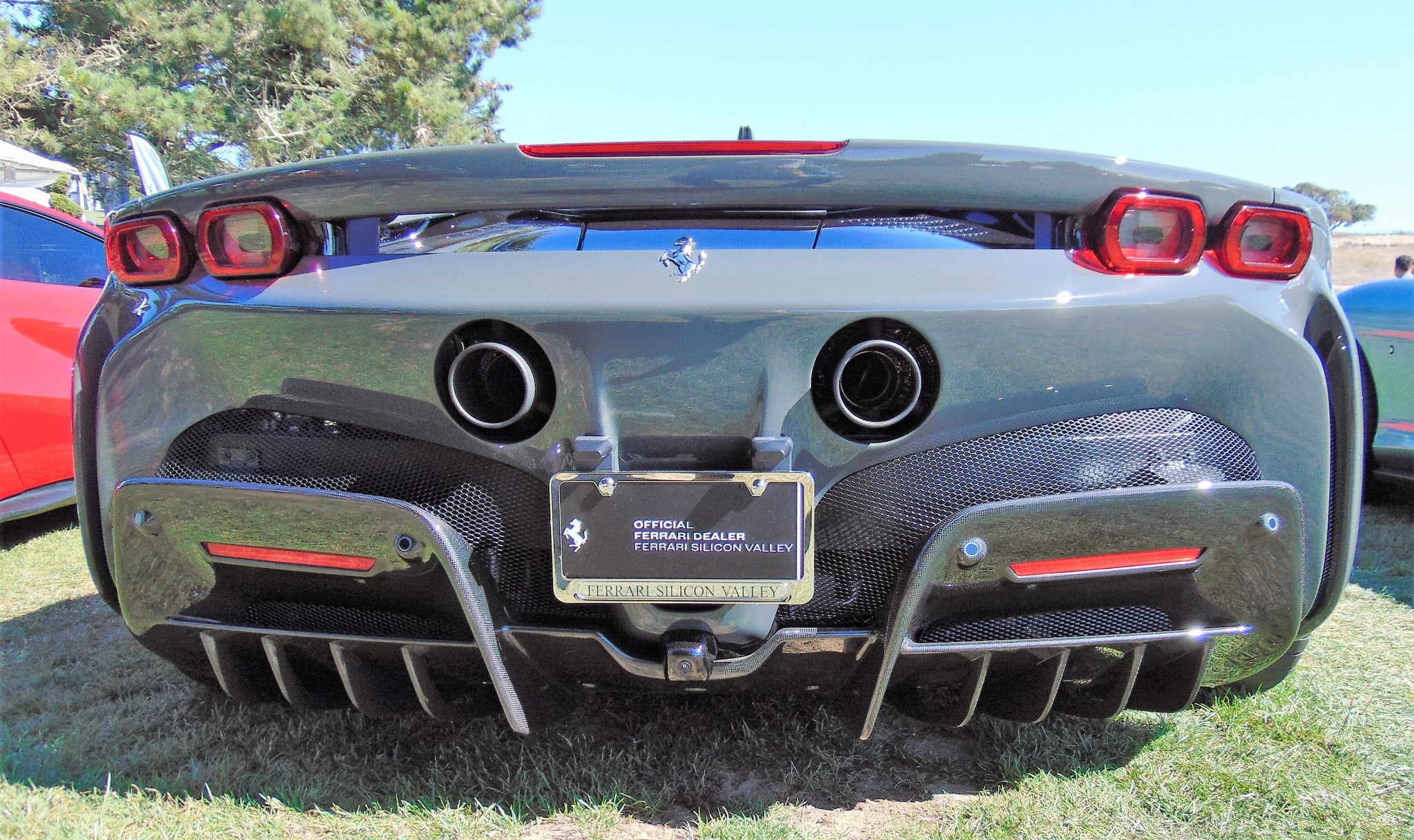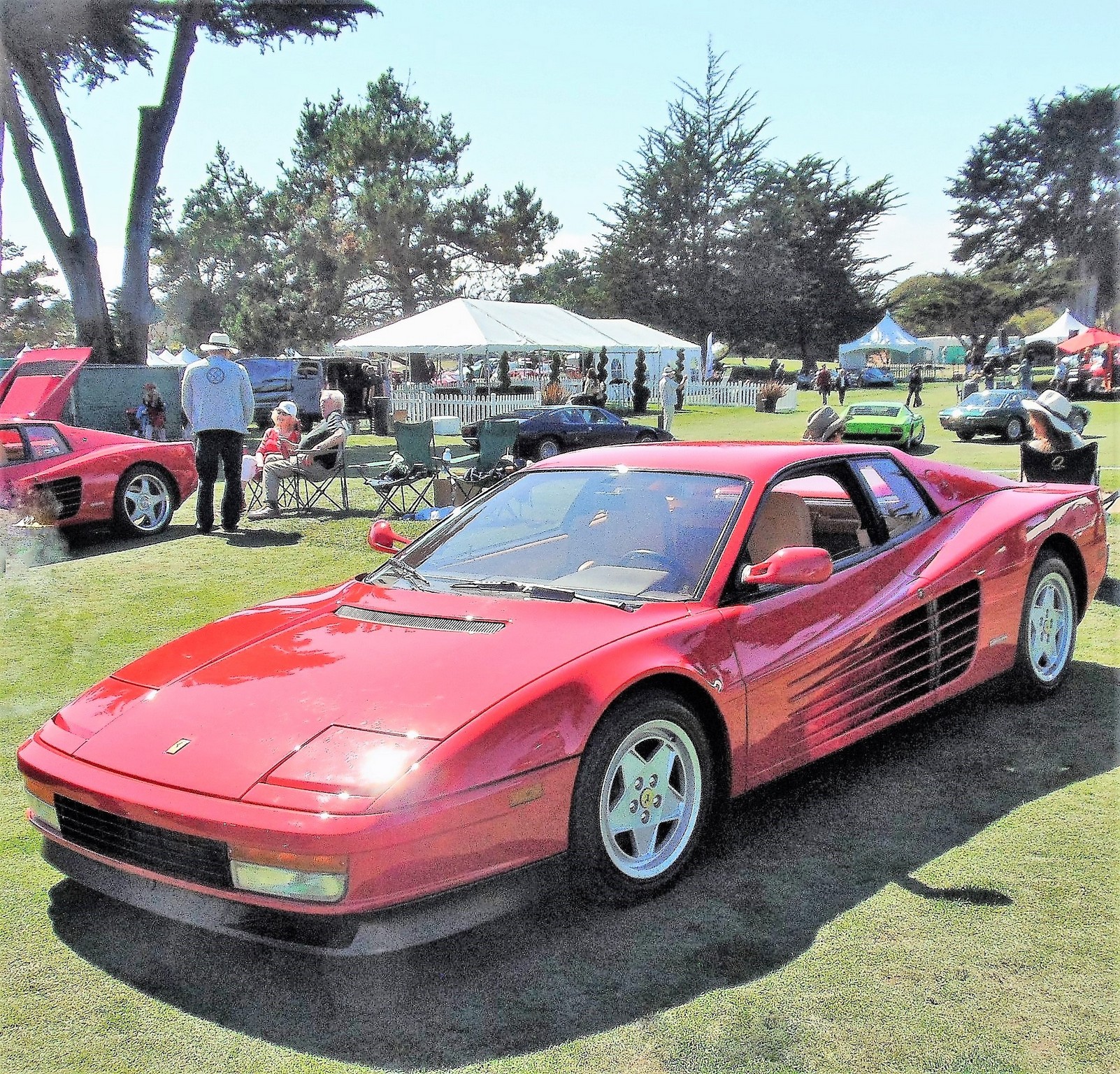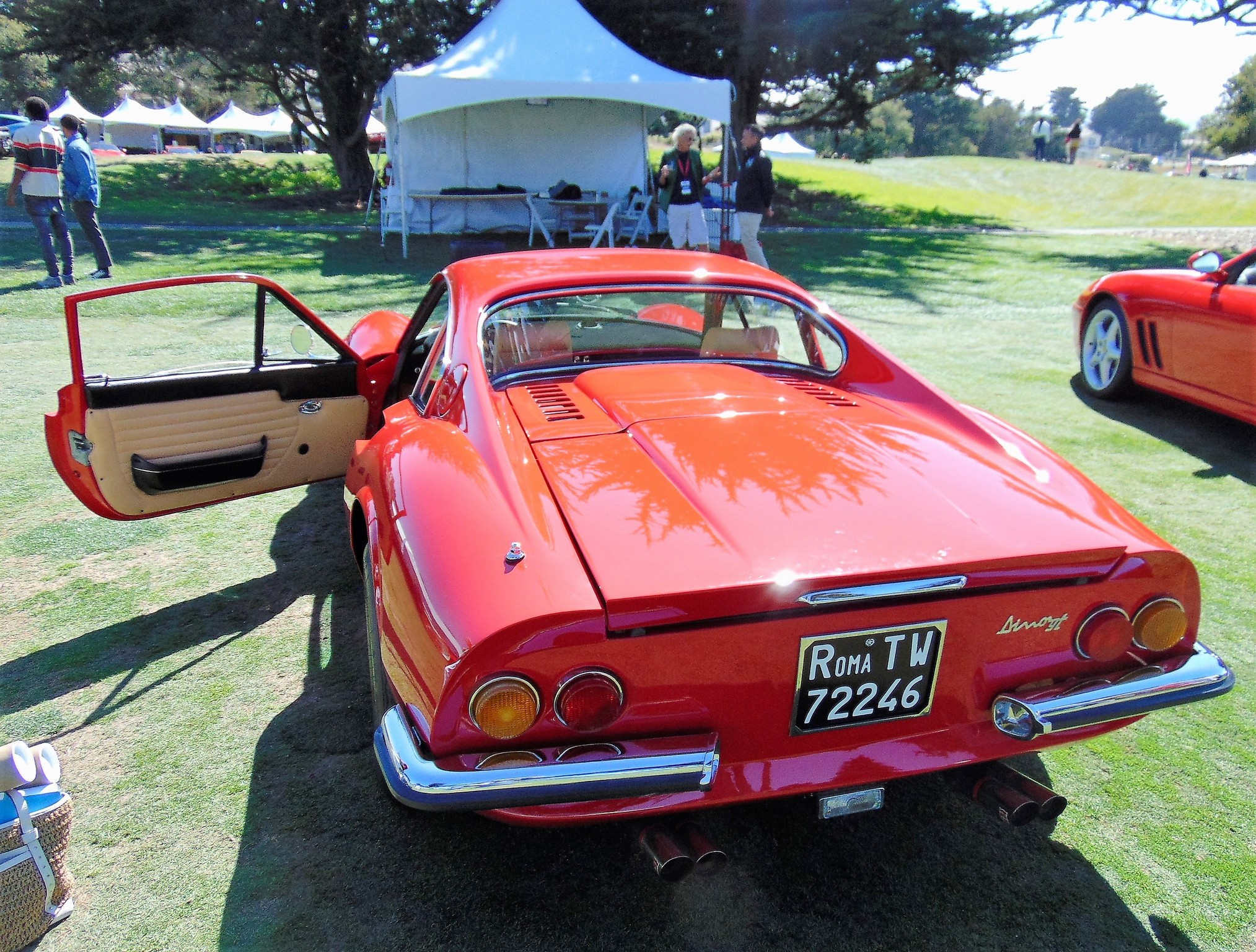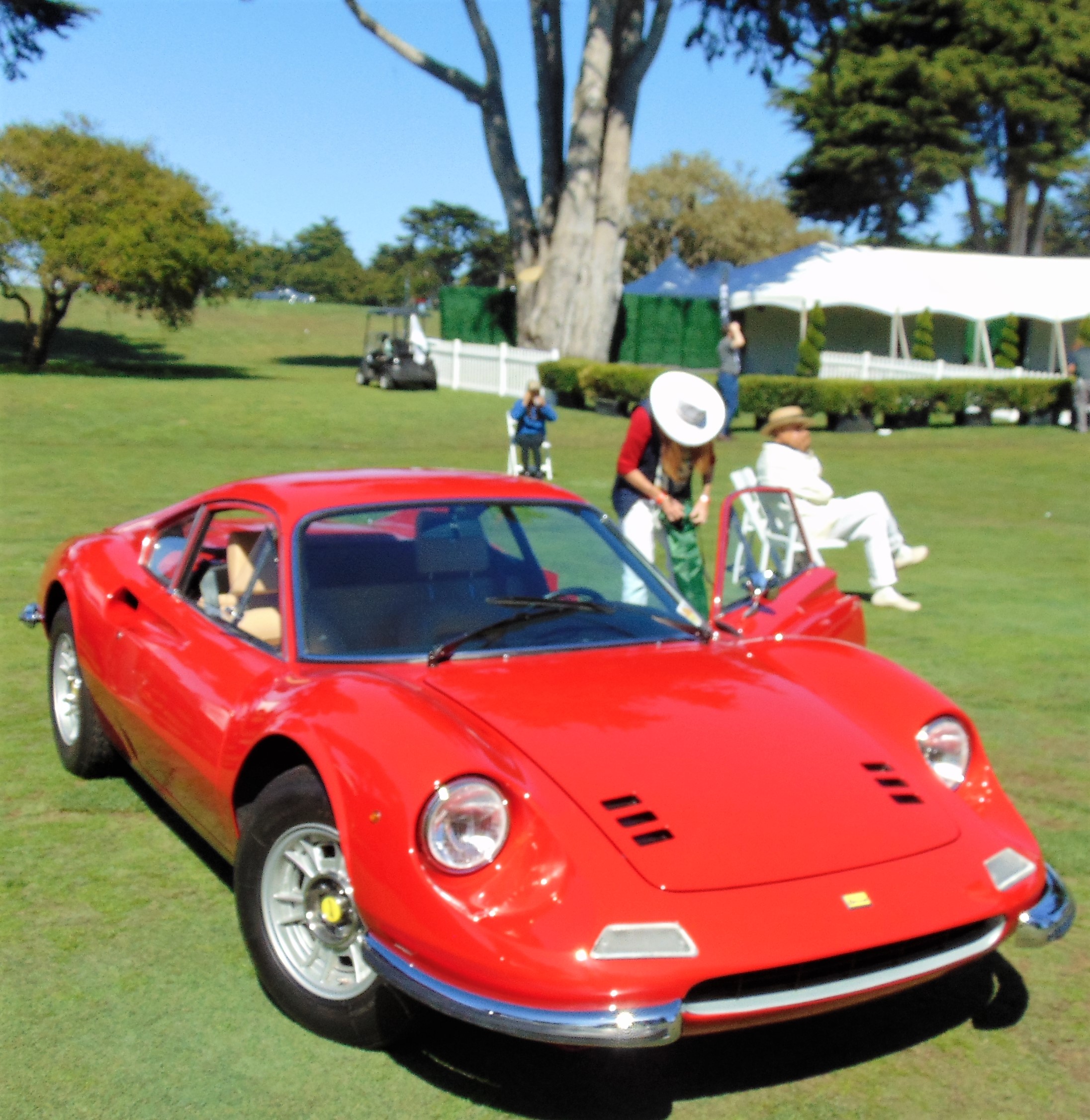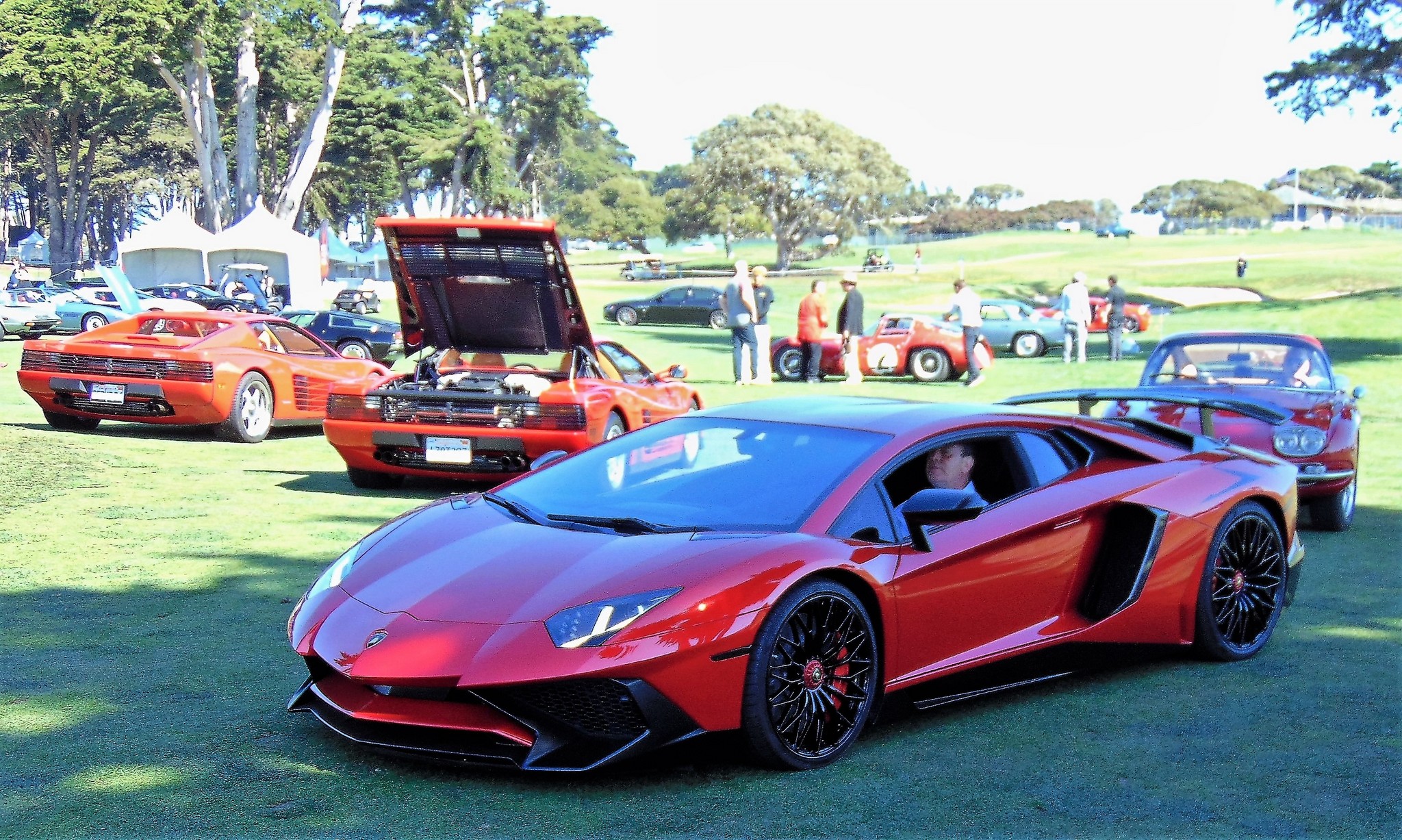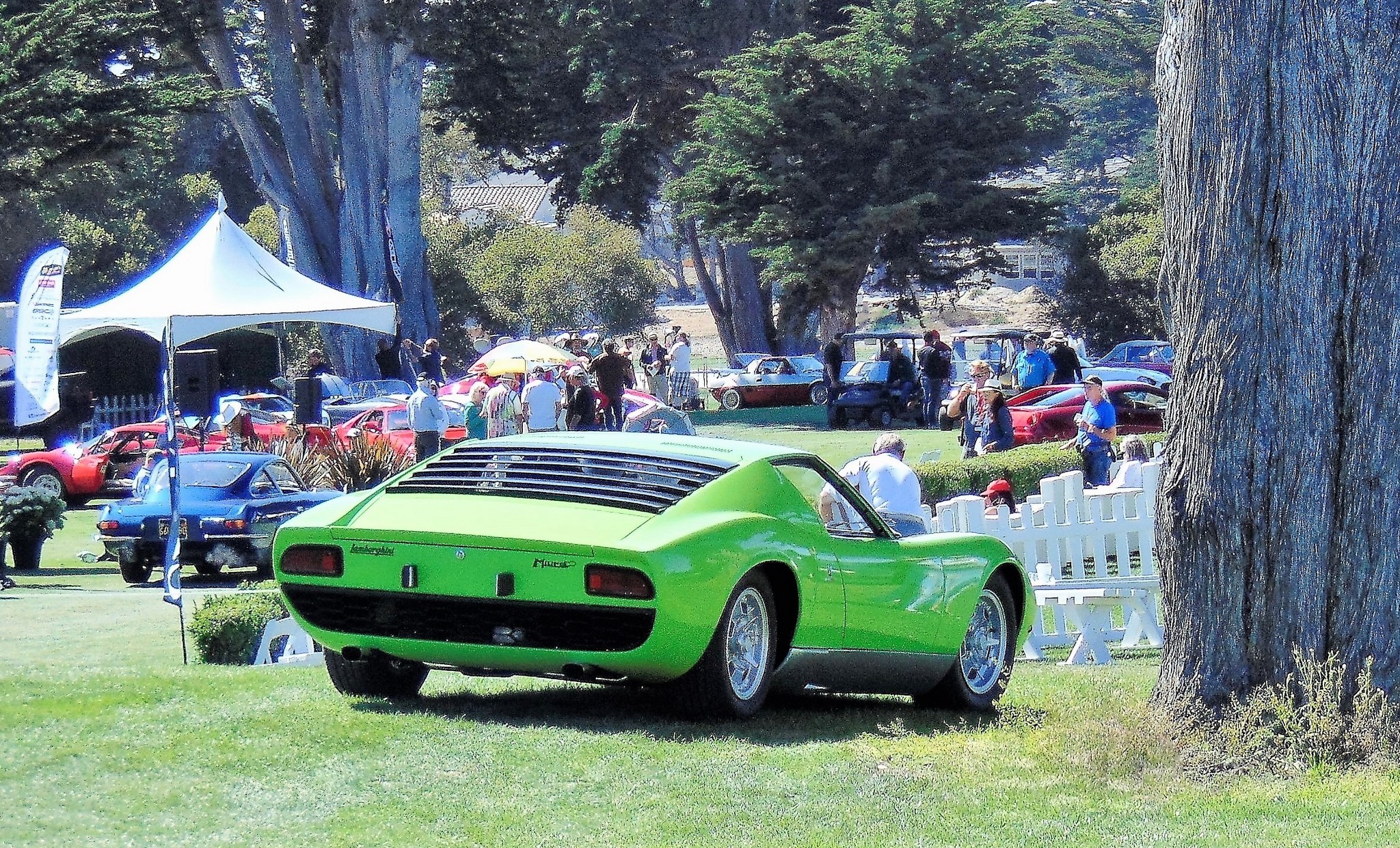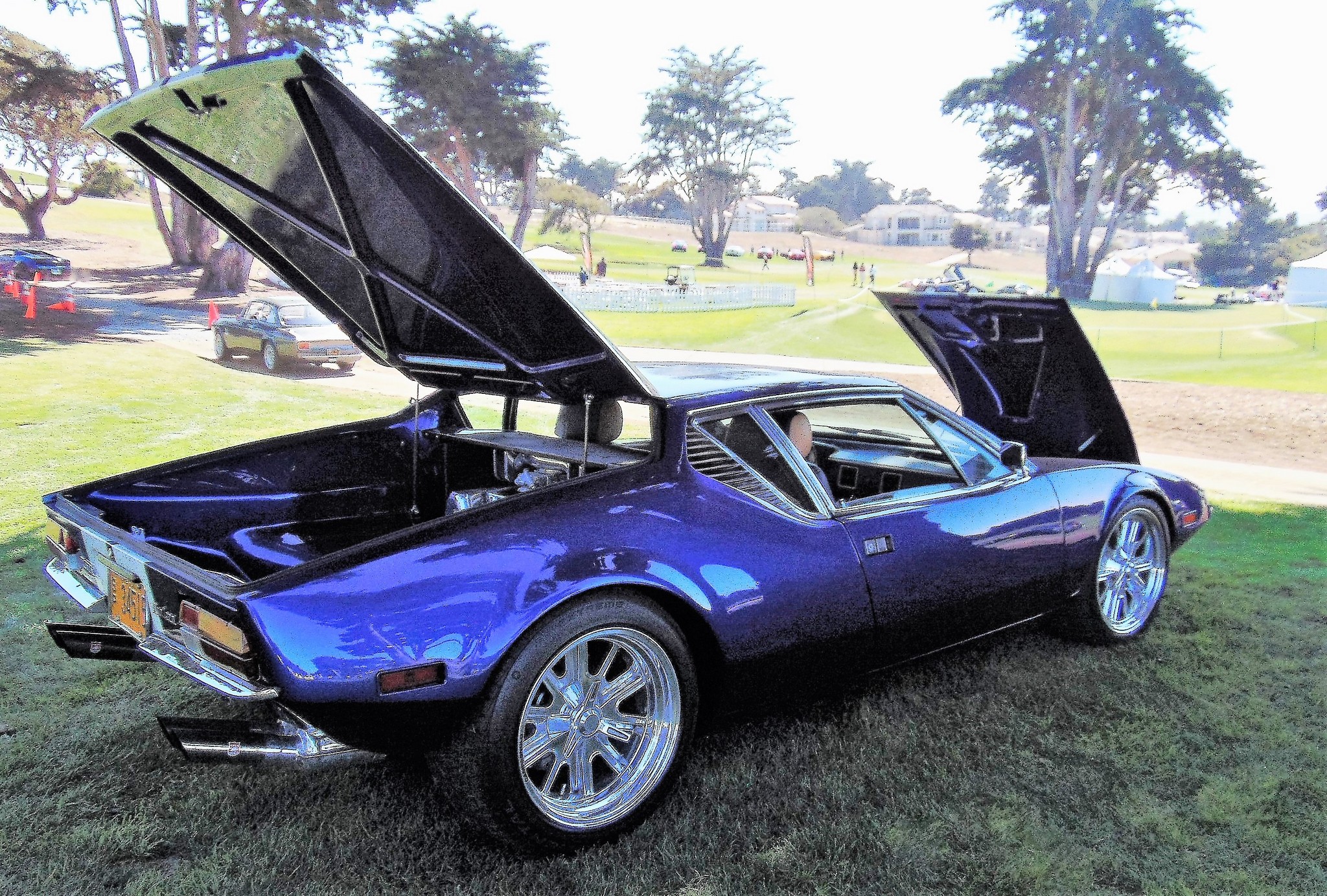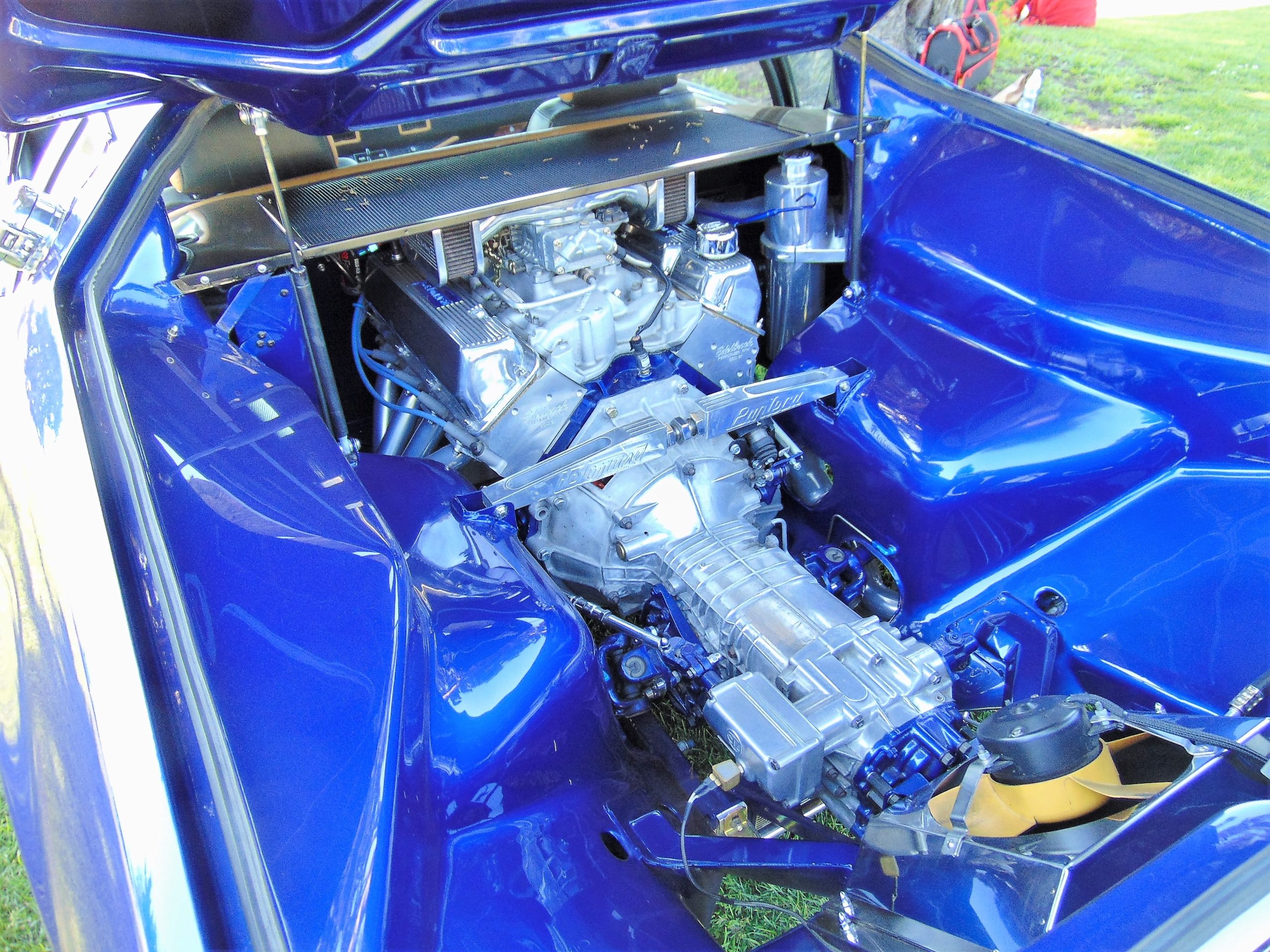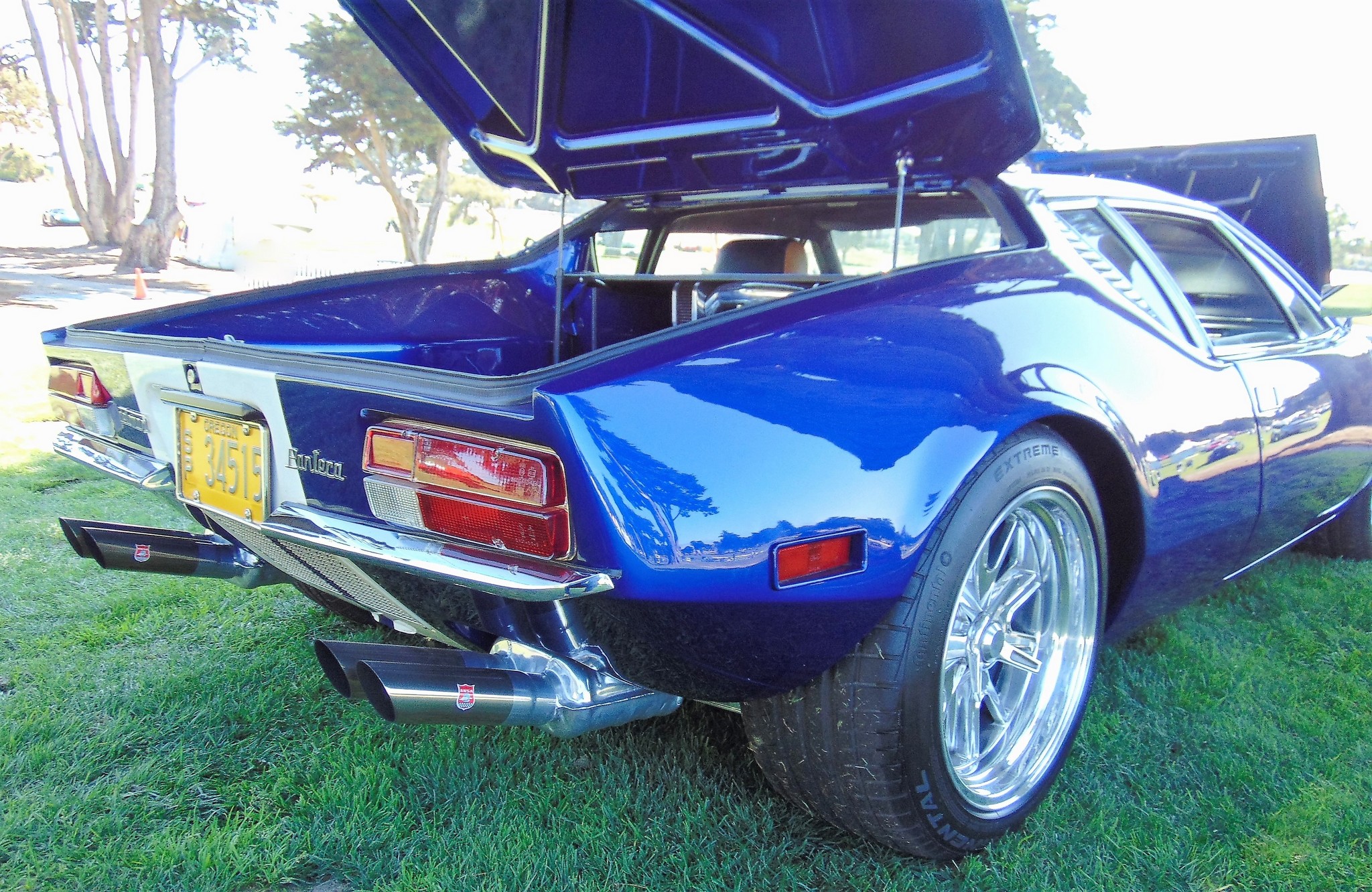The 2022 iteration of Concorso Italiano took place on Saturday, August 21, at the Bayonet Black Horse Golf Course in Monterey (Seaside), California with Steve Kittrell and Matt Stone sharing commentator duties.
The proliferation in colors of the 700-plus supercars and hypercars dotting the golfing fairways reminded me of looking through a kaleidoscope. In the color mix, adding to the metallic pastels often seen on Lamborghinis as well as on other marques, were solid colors in both glossy and matte finishes. For some, a matte finish lends depth to the paint. The widest band in the Ferraris spectrum of colors at the event was Ferrari’s always striking Ferrari red! For the discerning, more than a dozen shades of Ferrari Red are on Ferrari’s color palate.
Occasionally Ferrari adds to its palate a tint, shade, tone, or hue, as they did this recently in augmenting with Rosso F1-75 Opaco. Part of the mystique is due to the fact that the first Ferrari produced was finished in red. That’s because the Federation Internationale de l’Automobile mandated Italian grand prix racing cars to have a red finish at that time. But on this Saturday at Concorso, plenty of metallic and solid paint colors other than red were displayed on Ferraris and other Italian vehicles.
Yet this picture is incomplete. There were even more colors in grand format beckoning in this panorama! The beige of the golfing sand traps, the pale green fairways, the deep green of the Monterey Cypress, not to mention the blue Pacific sky all made this expansive and undulating landscape a soothing place to be, and a painter’s paradise! All were hopefully prepared for the occasional roar of a V12 engine. That’s just copasetic with the glitz!
The undulations of the golf course not only complimented the curves in the Italian vehicles, but also lent the intrigue and impetus of exploring over the next rise. The next rise at Concorso are in abundance, which equates to lots of excitement!
One final portrait of this venue is in order. The maritime environment and cooling Pacific breeze calendared for this August event, not to mention the softer than carpet, anti-reflecting, gardener tended grass underfoot, increased the attributes that make this a very paradisical and privileged venue for an exotic supercar event. Established in 1985, Concorso Italiano is the largest Italian car event anywhere.
One thing for sure on Saturday, the Concorso presented larger than life!
Ferrari SF90 Stradale
Ferrari’s SF90 Stradale, designed primarily by Flavio Manzoni, is a plug-in hybrid electric vehicle that was on display at Concorso in a warm-toned, matte-grey finish. “Stradale” means for road travel and “SF” recognizes the 90th anniversary of the Scuderia Ferrari racing team. Racing was what Enzo Ferrari was all about, being a former race car driver and Ferrari’s Founder. This longitudinal mid-engined, all-wheel-drive vehicle in a two-door Berlinetta body style began production in 2019 in Maranello, Italy and continues there through the present day. The latest iteration includes a retractable hard top.
The motive muscle in this 1,000 hp hybrid comes from two sources. First, and for most road cars over adequate, is a twin turbocharged, gasoline powered 4.0 L V8 engine, generating 769 hp at 7,500 rpm. The power is applied through an 8-speed dual-clutch transmission that shifts gears in 200 msec. Because the purpose here is plug and play renewable energy, there is an additional power source of a triad of electric motors adding 217 hp.
Any skeptics of the workability of electrical motive power should check out Ferrari’s Formula One racing machine! Been around for years, and always near or at the top. The electric motors also provide regenerative braking (charging) and torque vectoring to direct torque to where it’s needed, and in the proper proportion. (See photo of the compact, muscularly-styled, rear view)
Regenerative braking charges the 7.9 kWh lithium-ion battery, giving the car just over 15 mi (25 km) of electric powered range. Fuel capacity for the gasoline engine is 18 gallons with the economy reaching up to 51 mpg city and highway. Four driving modes are available selected by the eManettino control on the steering wheel. The default is Hybrid mode operating on both the fuel powered engine and the electric motors. In Hybrid mode, the car’s computer stops the engine if the driving conditions permit, to save fuel. The driver has the option to restart the engine. In eDrive mode the car operates exclusively on the electric motors. Performance mode keeps the engine turning to charge the battery, and to keep the cer performance-ready.
Qualify mode provides full potential to the powertrain. The SF90 Stradale delivers torque to each of the four wheels according to where the torque will be best used, as controlled by the eSSC (electric Side Slip Control). A brake-by-wire system is employed including traditional hydraulic braking.
High powered vehicles need to be held securely to the roadway to maintain traction. The SF90’s aero-controls are designed for just that purpose. The 860 lb of downforce that the SF90 produces at 155 mph is clearly a big assist to that objective. The valuable experience garnered in Ferrari’s 70-plus years in Formula One racing provides real-world expertise. Ferrari’s Drag Reduction System (DRS) separates the two surfaces of the wing for speed on the straightaways, and closes them creating a single surface for maximum downforce when negotiating curves. Along with the modified Ferrari Formula One (F1) DRS, vortex generators are mounted at the front, altering air flow over and under the car which adds to downforce.
To evidence the effectiveness of aerodynamics in vehicles, experts performed a calculation. If an F1 could be placed on the roof of a tunnel while traveling near full speed, similar to the tunnel at the Grand Prix of Monaco, the F1 would remain there, not falling. This means that the F1 aerodynamics generate greater downforce that the entire weight of the vehicle!
The Stradale’s chassis composition is of aluminum and carbon fiber. Carbon fiber is lighter in weight than aluminum but brings several times greater rigidity. The two-seat, cab-forward design utilizes the car’s aerodynamics parts very effectively, and assists in the placement of the radiators and cooling of the hybrid system. Front suspension is independent wishbone. The Stradale’s kerb, base, dry weight is 3,527 lb (1,600 kg). Of that, the three electric motors weigh almost 600 lbs (270 kg), but they provide extra power and hybrid operation.
Ferrari Testarossa
I always admired the arresting styling and twelve-cylinder power of the Ferrari Testarossa. This model is sometimes remembered for appearing in the TV Show Miami Vice and for displaying the showy but functional long, horizontal side strakes. Testarossa means red (engine) head, in Italian. Several Testarossas graced the fairways at the 2022 Concorso.
The Testarossa Type F110 is a mid-engine, two-door coupé sports car which Ferrari produced in Maranello, Italy over the period 1984 to 1991 as the successor to their Berlinetta Boxer. All versions of the Testarossa were made available with a five-speed manual transmission mounted at the rear. The placement of the engine between the axles and behind the cabin, called rear mid-engine mount, places the center of gravity near the midpoint of the car, increasing stability while improvising handling and the ability to negotiate curves. The ensuing standing weight distribution initially was 40% front and 60% rear.
The original Testarossa debuted at the 1984 Paris Auto Show. It was re-engineered for the 1992 model year, with two models following from 1992 to 1996, the 512 TR being introduced at the Los Angeles Auto Show, and the F512 M (modificata, “modified”) at the Paris Auto Show. For most practical purposes, these were new cars. The weight distribution was improved respectively to 41% front, 59% rear, and 42% front, 58% rear. The F512 M was Ferrari’s final car to employ the flat-12 engine.
The engine in the F512M, Ferrari’s final flat-12, was a 4.9-litre (301.6 cu in, 4,943 cc) Tipo F113 G longitudinally mid mounted flat-12 engine yielding maximum power of 324 kW (434 hp) at 6,750 rpm, and maximum torque of 500 NM (370 ft⋅lb) at 5,500 rpm. The engine was endowed with good breathing at four valves per-cylinder, lubricated via dry sump, with a compression ratio of 10.40:1.
Performance of the F512 M is from 0 to 62 mph (100 km/h) in 4.7 seconds, 0 to 100 mph (161 km/h) in 10.2 seconds, and can run a standing quarter mile in 12.7 seconds, or a standing kilometer in 22.7 seconds. The top speed of the F512 M is 315 km/h (196 mph).
Some distinctions are worth knowing to avoid confusion for the terms flat, boxer, V, and flat-head. Auto-speak for gasoline powered, piston-driven engine configurations:
- Flat – the two cylinder banks lie opposing each other on either side of a central crankshaft, in a horizontal plane; the advantage is a low center of gravity
- Boxer – the two cylinder banks are located on either side of a central crankshaft, in a horizontal plane with opposing pistons mirroring each other’s motion;the advantage is a low center of gravity, and theoretically superior balance
- V – the two cylinder banks form an angle generally between 60 and 90 degrees, with a central crankshaft adjoining them at the point of the V; the advantage is improved primary balance, less vibration, and a compact package
- Flat Head – this older style engine did not employ the more advanced overhead camshaft and valve train
Dino (Ferrari)
I inspected several Dino Ferraris on display by private owners, in a variety of colors. A striking scarlet one with matriculation from Rome caught my attention with paint so glistening that it almost appeared covered with water. The mid-engined, rear-drive Dino sports car was made by Ferrari from 1957 to 1976 as a lower-cost sports car. Enzo Ferrari chose to call the marque Dino, after his son, instead of Ferrari to keep some distance between Ferrari’s stellar reputation and the new Dino in case things didn’t quite work out. But things did work out, for the next 20-years of the production run. Try to buy this unique classic today at lower-cost.
The aluminum-bodied Dino employed a six-cylinder engine, developed by Enzo’s son to power Formula Two racers. Formerly, Ferraris used 12-cylinder power plants in their cars. The Dino V6 has a unique sound, an exhilarating raspy, snappy, high-revving roar. The first-generation Dino was styled by Pininfarina. For me, the Dino’s styling epitomize the flawlessly balanced use of curves with timeless design. Over its production life the Dino appeared in many models and multiple categories including road cars, sports racing cars, sports prototypes, concept cars, and single seaters. Always an attention getter!
An example is the Dino 246 GT, a steel-bodied road car, with production starting in 1969. The V6 engine had just been upsized to 2.4 L, (147.6 cu in) generating 192 hp at 7,600 rpm. By comparison, Ferrari made its second sports racing car, the 1958 Dino 296 S. Being a special purpose race car, only one was produced. The engine displacement was 3.0 L (180.8 cu in;). 296 hp) at 7600 rpm. The output was about fifty percent greater than the Dino 246 GT, but the 296 S design was for a race car that only needed to operate problem-free only for a short race, and not for years of driving. I’m not saying that the Dino 296 S wouldn’t last for years on the road, either.
Lamborghini Aventador
Lamborghini’s Aventador, named after a Spanish fighting bull, is at the end of the line, and I do mean production line. It seems like only yesterday that Lamborghini gave birth to this limited edition hypercar. However, according to Lamborghini there will be a restart to production in order to replace the fifteen Aventador Ultimae models lost to customers nearly two miles deep in the Atlantic Ocean with the sinking of the Felicity Ace earlier this year. Sadly, the total number of lost vehicles lost in that incident approached 4,000 with a value in the range of $400-million.
This exotic limited edition hypercar has appeared in nearly 20 versions and special editions, not including several Lamborghinis that are based upon the Aventador. A few notables are the S (enhanced), SV (SuperVeloce, or Super-Fast), SVJ (Super Veloce, or race car), LP 700-4 Ultimae (the top and terminal Aventador), also their final naturally aspirated V12. Regarding my use of the word “end”, above, tune in for more later.
Lamborghini Miura
On Saturday I spotted a pale seafoam-green Lamborghini Miura in the line of cars waiting to appear on the grassy stage. The Miura was Lamborghini’s first attention getter that displayed unique, low slung planar lines with the body appearing very wide. Lamborghini produced this sports car between 1966 and 1973. The two-seat Miura was the first supercar to employ a rear, mid-engined layout. Today this layout is widely used in sportscars and supercars. Lamborghini engineers are credited with creating the Miura as an axillary project, designing it in their spare moments. That’s called inspiration, which is how so many great projects arise and fulfill. The car received superb reviews from fans and press alike.
The first version of the Miura was the P400. The power was from a modified Lamborghini 3.9 L V12 engine from their 400GT. The engine was mounted transversely, across the car’s chassis, and generated 345 hp. Between 1966 and 1969 Lamborghini produced 275 P400s. A popular Miura and the final one was the P400SV (Miura SV), debuting in 1971 incorporating upgrades that included altered cam timing with new Weber carburation.
Lamborghini Miura Jota
Bob Wallace, Lamborghini’s chief test driver for over a decade, calling himself a troubleshooter, was given carte blanche in 1970 to create a test car based on the Miura that would follow the FIA’s Appendix J racing regulations. Note that Wallace helped to develop Valentino Balboni, Lamborghini’s high profile and recently retired chief development driver whom I often see attending the Concorso Italiano.
The test car was named the Miura Jota. To arrive at the Jota, Wallace made numerous changes to the Miura including cam lobes, power delivered, and suspension, with some of the modifications quite striking. Weight on a race car is important. Car racing can produce close finishes, even photo-finishes. Every ounce matters! I remember hearing of a Formula One team boss pulling out a single screw on his F to save weight. We hear of development teams dropping the weight of a car maybe 20-30 lbs, which makes a difference after many laps. Wallace lowered the weight of the Jota from that of a standard Miura by roughly 800 lbs! That’s a staggering amount of excising which accompanied a notable power increase of approximately one third bringing the horsepower to the mid-400s at 8,500 RPM. Sounds like the Jota would move on down the track!
The initial Miura Jota was a one-off. It was sold to a private client in the early 70s and was crashed with total destruction ensuing. The focused client commissioned a rebuild. Much later, another look-alike was made to order for a private fan, being completed in the mid-2000s. Once again, the seemingly omnipresent Bob Wallace consulted to ensure accuracy.
De Tomasa Pantera
The De Tomasa Pantera is a Franco-American piece of work in the form of a rear mid-engine, rear-drive sports car employing use of a steel monocoque chassis. The car was styled by the Italian design firm Carrozzeria Ghia SpA. The American-born designer Tom Tjaarda was the designer and his work replaced the De Tomasa Mangusta.
Other than Mr. Tjaarda, the American part to the car was a Ford V8 engine. The original engine came in sizes of 4.9 L (302 cu in), 5.8 L (351 cu in), and 5.9 L (360 cu in), with the initial and later curb weights respectively, 1,420 kg (3,131 lb), and 1,474 kg (3,250 lb). Ford stepped out of the deal in 1975, but De Tomasa continued with the car until the early 90s, occasionally adding modifications such as the stylish flared fenders.
The Pantera appeared quite racy in a wedge shape and stylishly-energetic. In its wake a cult following developed as well as the car clubs Pantera International and Pantera Owners Club Of America, the latter of which holds an annual convention in Las Vegas, Nevada where the Panteras’ thunder reverberates between the high rise towers there. Owners appear eager to modify both the styling and engine of the Pantera, with some boasting modified engines of nine liters (542 cu.in.) displacement!
Don’t miss the Panteras that usually appear in force at Concorso Italiano. I scrutinized several at the 2022 event. At a previous Concorso, I admired a Pantera sporting both deck lids of unpainted carbon fiber. Not only was the appearance appealing, but the weight of the paint was saved. The weight of several coats of paint on a larger vehicle can reach 100 lbs which affects performance and fuel economy.


